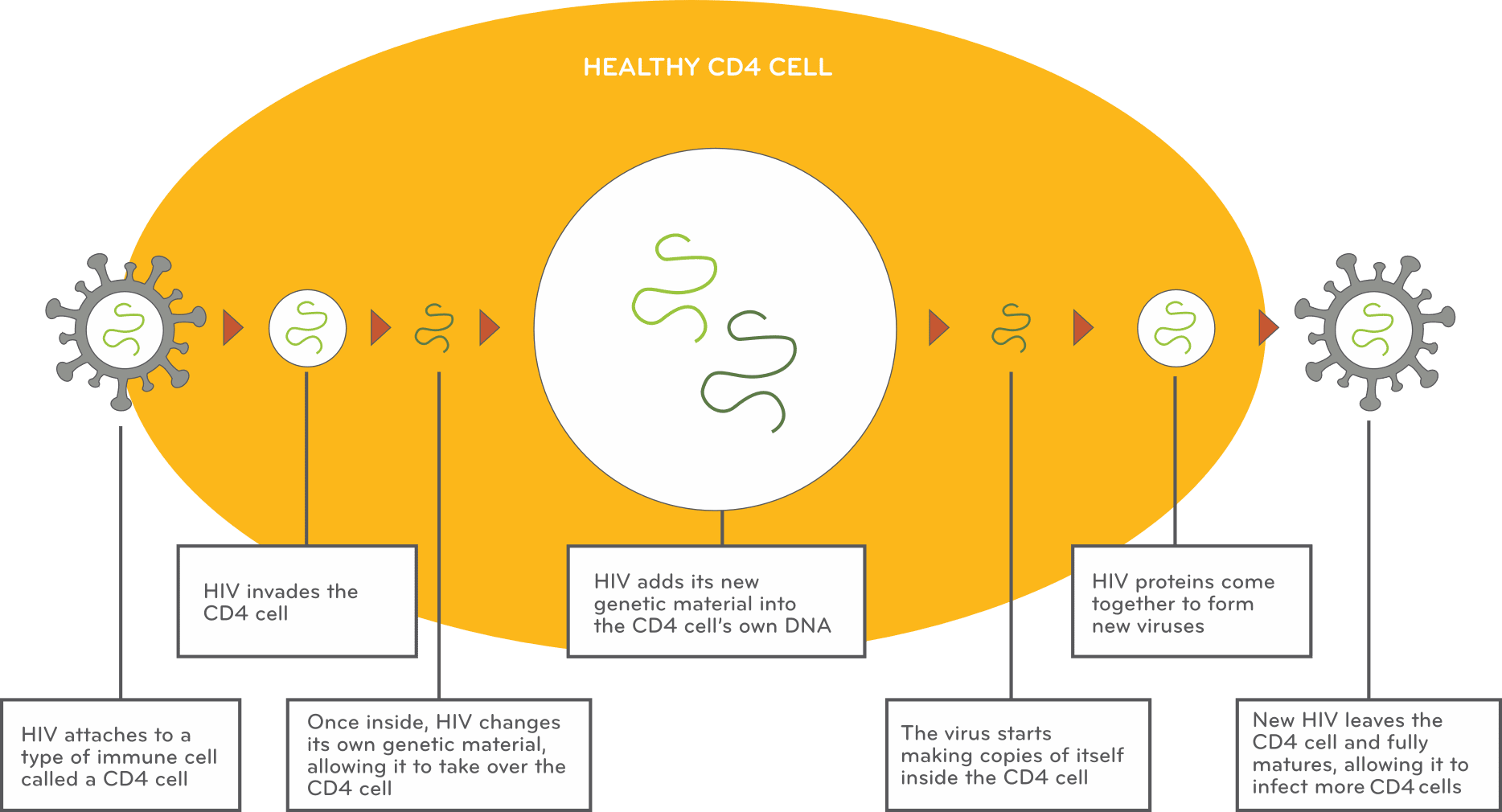
Understanding how HIV works can help you understand your treatment options
Model portrayal
This Gilead website is intended for US audiences only.
Like other viruses, HIV has a life cycle that involves several stages. During its life cycle, it attacks and destroys CD4 cells, which help protect the body from infection. HIV treatments work by fighting HIV at different stages of the life cycle. Research shows that taking and sticking to an HIV treatment that fights HIV in at least two different stages of the life cycle is necessary to reach and stay undetectable.
Talk to your healthcare provider to learn more about the different treatment options and how they work.


CD4, cluster of differentiation 4.
There are many available treatment options that combine different medicines together to stop HIV in at least two points in the life cycle. But, not all treatments are the same. HIV treatment can be a pill or an injection and can be taken at home or at the doctor’s office. How often it's taken or how many pills are taken at once can also vary depending on the treatment option. Your healthcare provider can help you find the right treatment option to fit your life.
HIV can develop something called a resistance mutation. When this happens, some HIV treatments may not work as well. Sometimes, HIV can already have a resistance mutation when it’s transmitted, or it can develop while someone is on treatment.
Taking your HIV treatment as prescribed can help lessen the risk of resistance. Skipping doses of HIV treatment can lead to less medicine in the body and allow HIV to multiply, which increases the risk of it developing a resistance mutation.
A treatment regimen that fights HIV in at least two stages in the life cycle can help lessen the risk of developing resistance. A medicine’s barrier to resistance refers to how well it can work even if the virus develops a mutation.
Treatment options can be more limited for people whose HIV contains or develops a resistance mutation. But, there are treatment options that can continue to work even if HIV develops resistance to certain types of HIV medicines. Your healthcare provider may run additional tests before prescribing certain treatment classes if they suspect they are fighting a resistance mutation.
Learn more about what to consider in a treatment

People featured are compensated by Gilead.
Did you know that, if given the chance, HIV can change over time, just like most viruses? When it does, that change lasts forever, and it can affect how well certain HIV treatments work. This is called “HIV drug resistance,” or sometimes you will simply hear it called “resistance,” and it’s important to know what that means for your treatment and overall health.
For some people, the virus may already be resistant before they start HIV treatment. Resistance can also happen after you start HIV treatment if there isn’t enough medicine in your body to stop the virus from multiplying. Some reasons for less medicine in the body may include missed doses, how other medicines interact with your HIV treatment, or even how your body processes the treatment.
There are ways you can help lower the risk of resistance. Remember to take your treatment as prescribed. It’s also helpful to talk to your healthcare provider about your treatment’s barrier to resistance. Talk to your doctor about the concept of resistance, including what a barrier to resistance means. You and your healthcare provider are a team. They can help you stay informed and stay on track with your treatment so you can aim for a healthier tomorrow. To learn more about how to help prevent resistance, talk to your healthcare provider. Learn more at HelpStopTheVirus.com
FEATURED VIDEO

HIV can change over time, and if it does, it can affect how well some HIV treatments work. This is called “HIV drug resistance,” or sometimes you may hear it simply called “resistance.” Once resistance develops, it can't be reversed. But there are ways you can help lower the risk of resistance. Watch the video to learn more.